
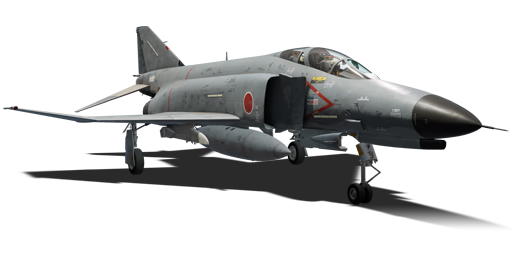


The F-4EJ Kai (F-4EJ改) was a crucial upgrade for the JASDF to extend the operational life and enhance the combat capabilities of its domestically produced F-4EJ Phantom IIs, which were becoming outdated by the early 1980s. Initiated under the Aircraft Structural Integrity Program (ASIP), the modernisation effort began in 1980, with development taking place between 1981 and 1982, leading to its first flight in 1984. This upgrade introduced advanced radar and FCS, improved navigation and communication capabilities, and integrated modern missiles and bombing systems. A total of 90 F-4EJ Phantoms were converted to the F-4EJ Kai standard, enabling them to serve for an additional three decades until their decommissioning in 2021, with the last unit retiring under the Air Development and Test Wing (ADTW).
The F-4EJ Kai was introduced in Update "Direct Hit". While it retains the classic F-4 "Phantom II" fuselage, it has been upgraded with 1990s technology to keep it relevant in modern combat. Notably, it shares the same PD radar, RWR, and weapon suite as the F-16A "Fighting Falcon", making it a formidable opponent. To maximise its effectiveness, pilots should focus on using the AIM-7Fs for long-range engagements and head-on attacks while relying on the AIM-9Ls for quick kills in dogfights. However, it's crucial not to linger in close-quarters combat for too long, as more manoeuvrable jets can quickly gain the upper hand. Fire the missiles, secure the kill, and reposition before another opponent can sweep in. A more risky strategy involves intentionally slowing down the heavier F-4E airframe by making tight turns and using airbrakes, which can cause pursuing aircraft to overshoot. By flaring off incoming IR missiles and forcing the enemy into an overshoot, the F-4EJ Kai can get on the opponent's six, allowing it to finish them off with either an AIM-9 or a precisely calculated gun burst using its ballistic computer. This tactic, while dangerous, can turn the tables on unsuspecting adversaries who underestimate the F-4 by overestimating their own speed and missile capabilities.
flaps
flaps
flaps
brake
| Belt | Belt filling | Armor penetration (mm) at a distance: | |||||
|---|---|---|---|---|---|---|---|
| 10 m | 100 m | 500 m | 1000 m | 1500 m | 2000 m | ||
| API-T/HEF-I/HEF-I/AP-I/HEF-I/HEF-I | 40 | 36 | 22 | 12 | 6 | 3 | |
| API-T/HEF-I/HEF-I/HEF-I/HEF-I | 40 | 36 | 22 | 12 | 6 | 3 | |
| API-T/AP-I/HEF-I/AP-I/AP-I/HEF-I | 40 | 36 | 22 | 12 | 6 | 3 | |
| AP-I/AP-I/HEF-I | 40 | 36 | 22 | 12 | 6 | 3 | |
| Name | Weight | Slot | ||||||||||
|---|---|---|---|---|---|---|---|---|---|---|---|---|
| 57 × | 688.9 kg |  |  |  |  |  | ||||||
| 12 × | 840.8 kg |  |  |  |  |  | ||||||
| 6 × | 1,445.4 kg |  |  |  | ||||||||
| 6 × | 1,524 kg |  |  |  | ||||||||
| 3 × | 1,087.3 kg |  |  |  |  | |||||||
| 615.2 kg | 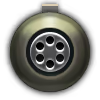 |  |  | |||||||||
| 3 × | 722.7 kg |  |  | |||||||||
| 3 × | 762 kg |  |  | |||||||||
| 76.9 kg |  |  | ||||||||||
| 2 × | 153.9 kg |  |  | |||||||||
| 2 × | 168.9 kg |  |  | |||||||||
| 205 kg | 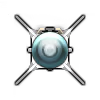 |  |  |  | ||||||||
| 231.3 kg | 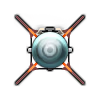 |  |  |  | ||||||||
| 5 × | 1,812.1 kg | 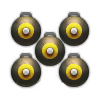 | ||||||||||
| Drop tank (600 gal.) | 137.9 kg |  | ||||||||||












Flight performance |
|---|
Survivability |
|---|
Weaponry | |||
|---|---|---|---|